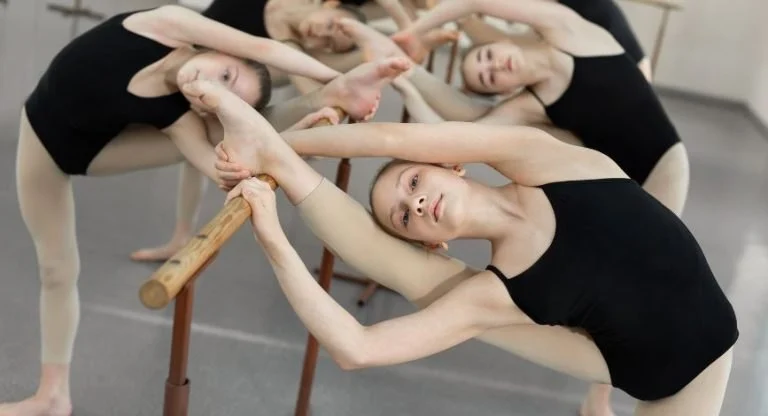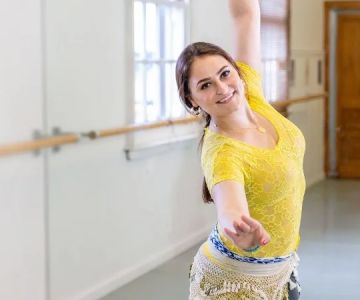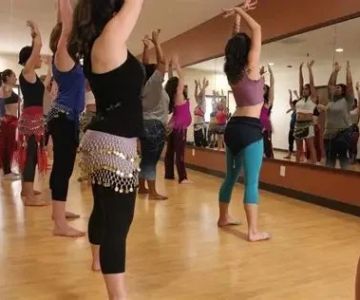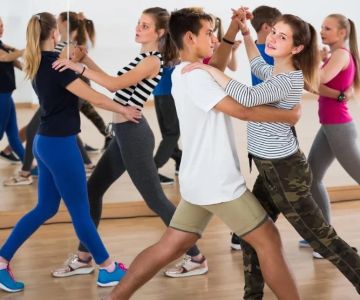
Top 10 Ballet Moves Workout Benefits
- Why Choose Ballet for Your Workout?
- Ballet Moves for Strength
- Improve Flexibility with Ballet
- Enhance Balance Through Ballet
- Boost Endurance with Ballet
- Benefits for Core Muscles
- Increase Body Awareness
- Mental Benefits of Ballet
- Ballet for Posture Improvement
- Ballet Exercises for Full-Body Fitness
1. Why Choose Ballet for Your Workout?
When most people think of ballet, they envision graceful performances on stage. However, ballet is not only for dancers but also a powerful form of exercise. Ballet workouts have become a go-to fitness choice for many, combining strength, flexibility, and endurance in one unique practice. It can be a great alternative to traditional gym routines, offering benefits for people of all ages and fitness levels.
The ballet workout involves precise and controlled movements that engage multiple muscle groups, helping to develop strength, flexibility, and balance. Plus, it offers a mental and physical workout that helps improve overall well-being.
2. Ballet Moves for Strength
One of the most prominent benefits of ballet workouts is strength building. Many ballet movements target key muscle groups, building lean muscle while enhancing overall body strength. Key moves like pliés, tendus, and relevés require you to control your body weight and engage multiple muscle groups simultaneously, including the legs, core, and arms.
Regularly practicing ballet helps tone muscles, particularly in the legs, buttocks, and core. As you perform these exercises, you build both strength and endurance, which can be translated into better performance in other physical activities.
3. Improve Flexibility with Ballet
Ballet is known for improving flexibility. The long, controlled stretches involved in ballet, such as arabesques and extensions, promote greater flexibility in the hamstrings, calves, and hips. Flexibility is vital not only for dancers but also for anyone who wants to improve overall mobility and reduce the risk of injury during physical activities.
These movements stretch and lengthen muscles, helping to improve joint mobility, especially in the lower body. As you continue to practice ballet, you'll notice increased flexibility, making everyday movements feel smoother and more comfortable.
4. Enhance Balance Through Ballet
Balance is a critical component of ballet. From pliés to pirouettes, ballet movements require stability and control. As you practice these moves, you engage your core and improve your overall balance. This can be especially beneficial for older adults looking to prevent falls and improve their coordination.
Ballet not only helps with physical balance but also teaches mental balance, focusing your attention and making you more aware of your body’s alignment and movement. Over time, the balance you develop through ballet will translate into better posture and overall body awareness.
5. Boost Endurance with Ballet
Ballet requires a combination of strength, flexibility, and stamina. Many ballet exercises are high-intensity and sustained, which improves cardiovascular endurance. The movements require continuous effort, whether you’re holding a position like a relevé or executing dynamic jumps and turns.
As you incorporate ballet into your workout routine, you’ll notice an improvement in your overall stamina. It helps build endurance in a fun and engaging way, increasing your energy levels for other activities as well.
6. Benefits for Core Muscles
The core is central to most ballet movements. Moves like the plié, développé, and grand battement engage the core muscles, helping to improve core strength and stability. A strong core is essential for maintaining good posture, reducing the risk of back pain, and improving overall body coordination.
Focusing on core stability during ballet exercises can also help improve your overall performance in other sports and physical activities, as core strength is the foundation of many athletic movements.
7. Increase Body Awareness
Ballet requires you to focus on your body’s movements and positioning, which increases body awareness. The precise and intentional nature of ballet exercises helps develop better coordination and control. Over time, you’ll become more aware of your body’s alignment, making it easier to engage muscles correctly and prevent injuries.
Body awareness gained through ballet also improves your posture and helps with other activities such as walking, running, or lifting weights. By strengthening the mind-body connection, ballet enhances your overall physical awareness and coordination.
8. Mental Benefits of Ballet
Ballet isn’t just a physical workout—it’s also an excellent mental exercise. Ballet requires concentration, focus, and discipline, which can help reduce stress and anxiety. The flow of ballet movements has a meditative quality, allowing you to focus on the present moment and escape daily distractions.
The structure and rhythm of ballet can also improve cognitive function, promoting mental clarity and focus. Whether you are learning new routines or refining your technique, ballet stimulates the brain while providing a satisfying sense of achievement.
9. Ballet for Posture Improvement
Good posture is a key benefit of ballet. The discipline teaches you to stand tall, engage your core, and align your body correctly. Regular practice of ballet movements strengthens the muscles that support good posture, including the back, shoulders, and core.
Ballet focuses on body alignment, which encourages a tall, upright posture that can reduce neck and back pain. By incorporating ballet into your routine, you can improve posture and reduce the risk of long-term musculoskeletal issues.
10. Ballet Exercises for Full-Body Fitness
Ballet is a full-body workout that targets every muscle group. From the legs and arms to the core and back, ballet exercises provide a comprehensive fitness routine. Whether you're doing barre work, stretching, or practicing jumps, ballet engages multiple muscle groups at once, providing a complete body workout.
This makes ballet an excellent choice for anyone looking to improve overall fitness. It combines strength, flexibility, and endurance training into a single, enjoyable workout that can be tailored to suit different fitness levels and goals.
With its combination of physical and mental benefits, ballet is an ideal workout for those seeking a full-body fitness routine. Whether you're a seasoned dancer or a beginner, ballet exercises can enhance your overall fitness, improve your body awareness, and provide a fun, engaging way to stay in shape.







 Miss Chloe’s School of Dance4.0 (19 reviews)
Miss Chloe’s School of Dance4.0 (19 reviews) Moves & Vibes Dancing Academy4.0 (29 reviews)
Moves & Vibes Dancing Academy4.0 (29 reviews) ACROSSERS Dance Studio, Laguna Hills5.0 (7 reviews)
ACROSSERS Dance Studio, Laguna Hills5.0 (7 reviews) BollyNaach Dance Studio - Pleasanton4.0 (9 reviews)
BollyNaach Dance Studio - Pleasanton4.0 (9 reviews) Arizona Youth Ballet0.0 (0 reviews)
Arizona Youth Ballet0.0 (0 reviews) Milwaukee Garage Dance Studio4.0 (45 reviews)
Milwaukee Garage Dance Studio4.0 (45 reviews) Do Japanese Schools Have School Dances? A Cultural Exploration
Do Japanese Schools Have School Dances? A Cultural Exploration Can I Learn to Dance While in Grad School? Tips for Balancing Dance and Academics
Can I Learn to Dance While in Grad School? Tips for Balancing Dance and Academics How to Master Waltz Fitness Routine: Tips for Beginners and Enthusiasts
How to Master Waltz Fitness Routine: Tips for Beginners and Enthusiasts Ballet for Seniors – Benefits, Tips, and What You Need to Know
Ballet for Seniors – Benefits, Tips, and What You Need to Know Inside Haven School of Dance: What Makes It a Standout Studio
Inside Haven School of Dance: What Makes It a Standout Studio Do American High Schools Have Dance-Offs? Real Stories and How They Work
Do American High Schools Have Dance-Offs? Real Stories and How They Work